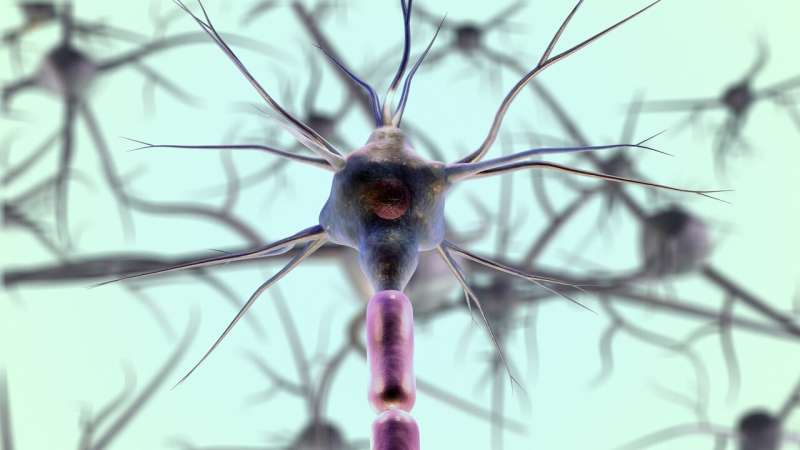This article has been reviewed according to Science X's editorial process and policies. Editors have highlighted the following attributes while ensuring the content's credibility:
fact-checked
proofread
A potential active ingredient for nerve regeneration

Nerve fibers (axons) transmit brain and spinal cord signals through nerves to target muscles or skin, and vice versa. Damage to these fibers thus leads to a disruption of connections and, consequently, to paralysis or numbness. The chances of recovery depend mainly on the speed at which the severed fibers regenerate as this process is time-limited, so usually only short distances can be overcome.
Consequently, nerve injuries in the legs and arms often lead to permanent damage, which later may be accompanied by neuropathic pain. Therefore, a key therapeutic goal of research is the development of therapies to accelerate nerve fiber growth. However, despite intensive worldwide research, such therapies still need to be created.
This goal may have been successfully approached by the research team from Cologne led by Dr. Philipp Gobrecht and Prof. Dr. Dietmar Fischer, Director of the Center for Pharmacology. In a newly published study in the Journal of Neuroscience, they investigated proteins called vasohibins that influence the state of the cytoskeleton in axonal growth cones (microtubules).
They found that the balance between detyrosinated and tyrosinated microtubules differs between adult and newborn animals. This is relevant because axonal growth in newborns is nearly twice as high as in adults due to optimally tyrosinated microtubules.
Using a defined compound (parthenolide) from feverfew (Tanacetum Parthenium), they inhibited the vasohibins so that the balance between detyrosinated and tyrosinated microtubules in neurons of adult animals became similar to that of newborn animals.
This led to a significant acceleration of nerve regeneration. Remarkably, the scientists also demonstrated in living animals that after daily intravenous administration, parthenolide significantly accelerated the healing process of damaged nerves, allowing the animals to move their toes and sense stimuli much earlier after treatment than untreated controls. A modified form of parthenolide, which can be administered orally, showed similar effects.
"Experiments on human nerve cells have already shown a regeneration-promoting effect. Further investigations in clinical studies are necessary before the active ingredient can be used in therapy," says Prof. Fischer.
More information: Philipp Gobrecht et al, Targeting vasohibins to promote axon regeneration, The Journal of Neuroscience (2024). DOI: 10.1523/JNEUROSCI.2031-23.2024


















